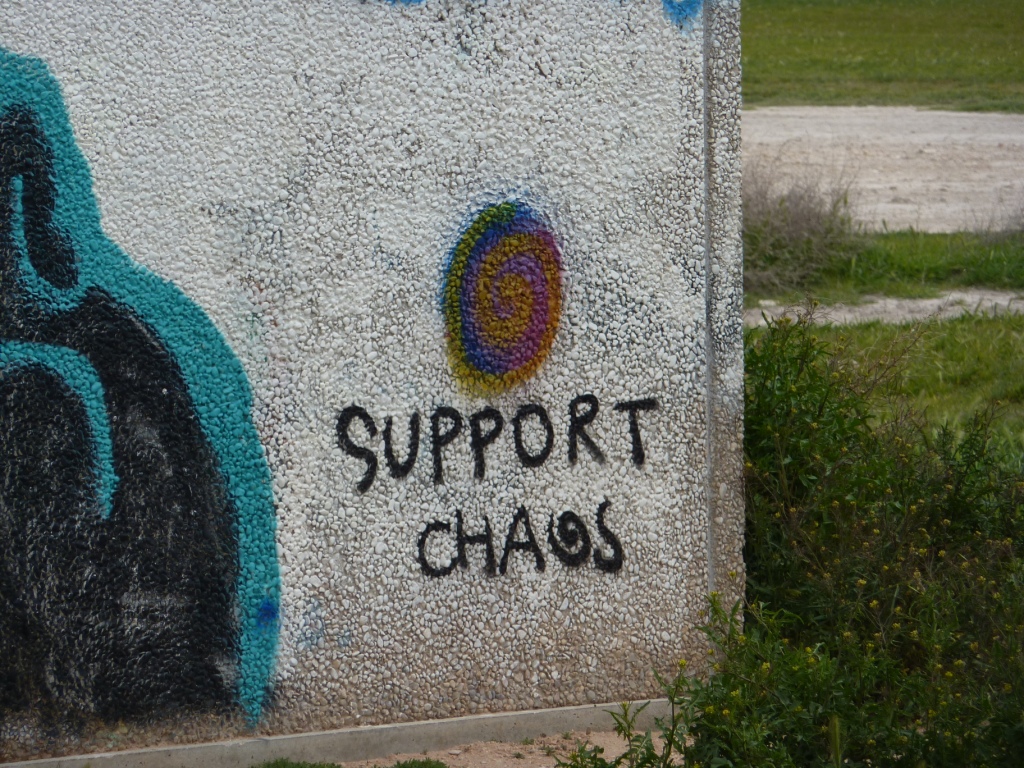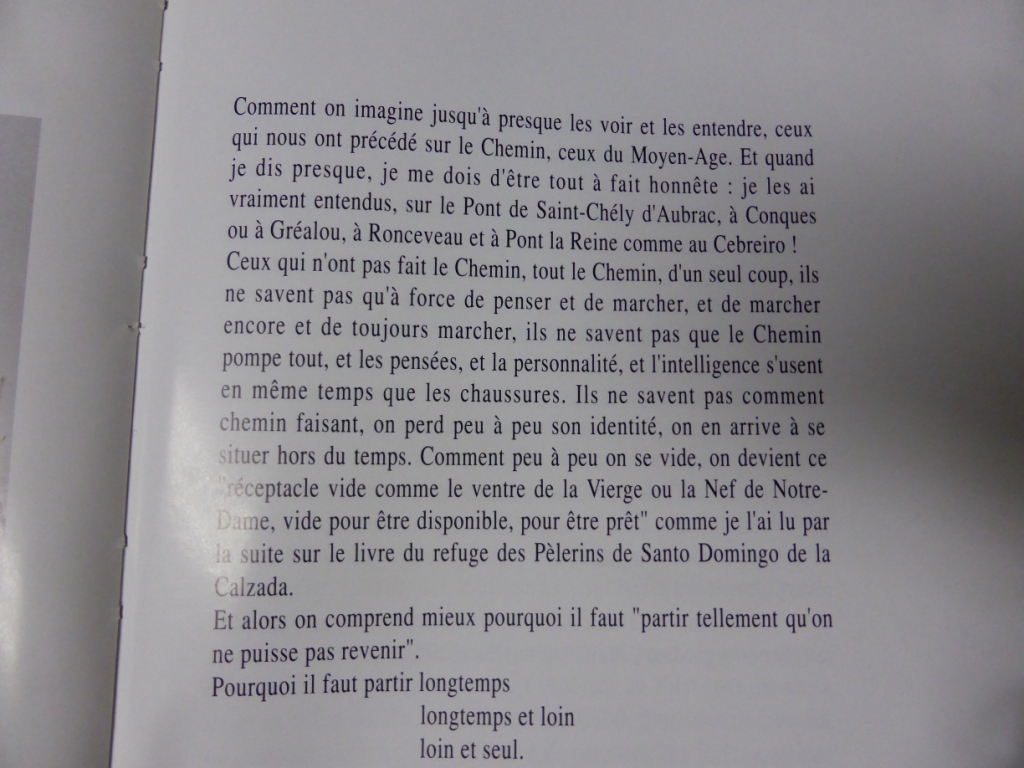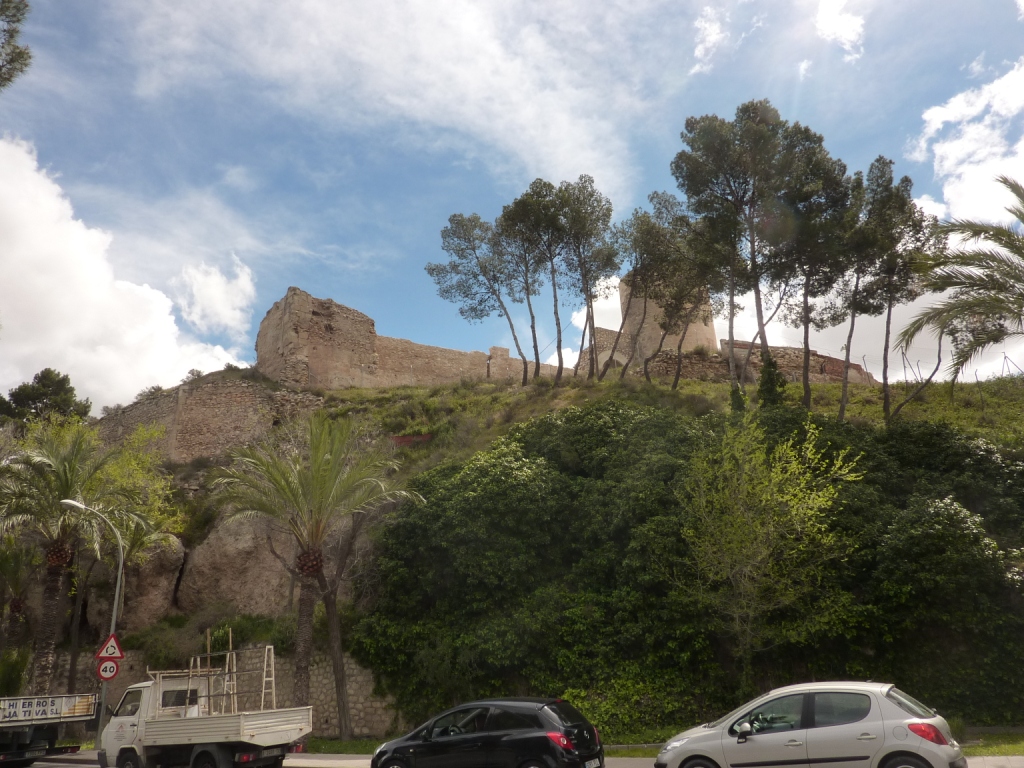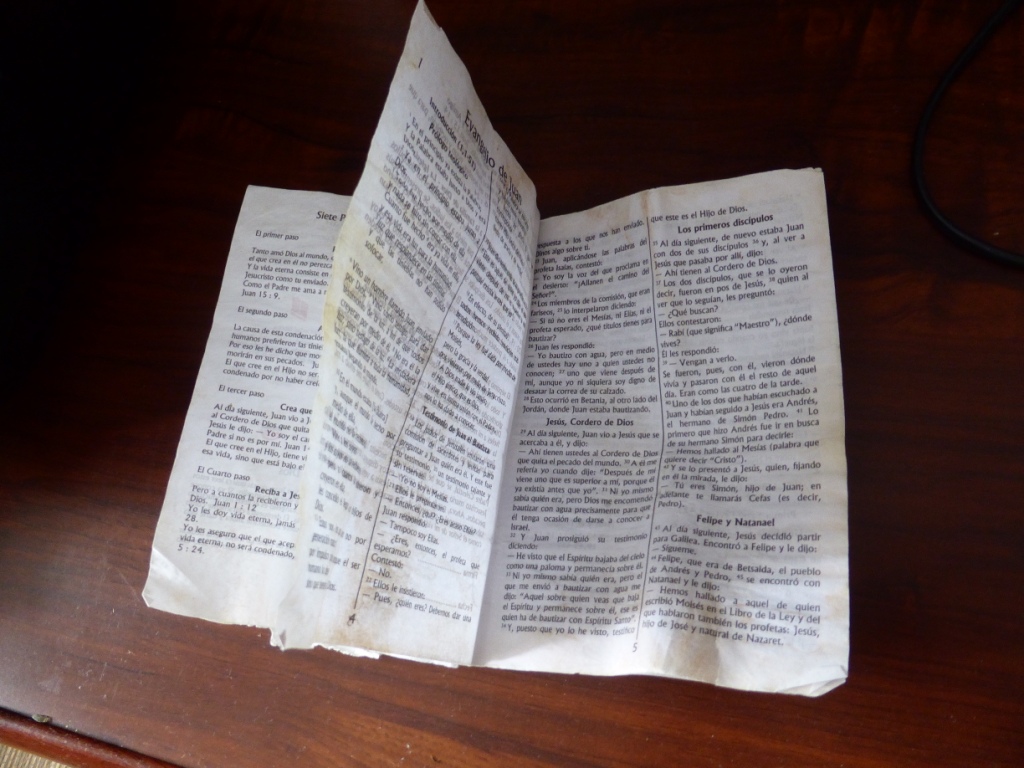I hesitate to say, “Miracle”.
Skip this next section if you want to get on with the story about the “miracle”.
There are several problems for me in writing this blog about a spiritual journey and talking about things like miracles. A diary is different since it may or may not be read by others. A blog is public and I have chosen mine to be open to all. There are four main difficulties
- Even though I am writing it for and to myself I am aware, now that I have written about 20 posts, that the story I tell does not emerge as faithful to my experience. Each post has themes, like the post on “Thanksgiving”. These tie up and package, more or less neatly, an idea, making it presentable. However, walking a lot and praying are not neat. The reality has no packaging. I can tell you of distractions, pre-occupations, mindless moments, resentments ( one later post will package these as if the theme were wrapped up and dealt with), angers, despairs and sore shoulders. This post will be fitted into a category. I will resist naming it “Miracles”.
- Each day on the Camino is full of ordinariness and is the same, only in a different place. The ordinariness makes little things important and rightly so. This post is about a miracle, but something very ordinary. On the Camino pilgrims notice the mundane and are sensitive to tiny shifts in moods or appetites. I fear that the blog can make these everyday experiences appear dramatic. They are wonderful, like this miracle, but not dramatic.
- Life on the Camino has plenty of chaos because the pilgrim lives close to himself/herself. Our inner lives, mine at least, just are; subject to thousands of influences, complexities and movements at any one moment. Moreover, on a long walk many of our culture’s rules, laws and conventions fall away and we are more exposed, more naked, less protected. My belief systems become equivalent, merge and lose relevance.
The blog as it is unfolding is putting an order into that chaos. When I tell myself (and others) my life story, I select the bits I believe will be most flattering, which most justify my bad decisions, which glorify my achievements and failures alike, which hide my weaknesses, gloss over my victims and round off as a good story. So, too, the blog presents a simple visual, verbal and ordered picture of an inner journey which, in reality, at every moment is born of the chaos I know is the true story of my life. The miracle I describe here is not, to my mind supernatural: it is an exceptional moment of order in this chaos.
4. Caminantes often say to me that they feel the Camino is about finding themselves. What is this self that we find? I came across a lovely book by a Frenchman, Georges Brière, in the private albergue in Sta. Irène, about 25 kms from Santiago on the Camino Francés.
Basically, in this account he says that the ego gets worn away like the soles on our shoes wear down as we walk leaving a void, like the Virgin’s womb or the Nave of Notre Dame. Writing the blog fills that void with another structured, ordered photograph which I want to erase as soon as I press “publish”. I don’t know that miracles help in the battle to keep the ego in place. I often wonder what life was like for Lazarus after Jesus raised him from the dead. “Tell nobody”, Jesus often said after a miracle. Who was this to protect? Was it “the Messianic secret” or a caution about boasting about the miracle?
The “Miracle in Elda”
Previously on Day 3 I had been boosted by meeting a fellow pilgrim and this helped me with my fatigue to keep going on a beautifully sunny morning. Around Mid-day I arrived in the rather faceless town of Elda which was at least capped by a castle.
When I was travelling by train to Alicante to begin this Camino I was regretting not having packed a New Testament. On my first Caminos I had read Mark’s Gospel, a bit every day and on the Camino de Levante, I read Luke’s. Before leaving Madrid I had placed each of my New Testaments on the kitchen scales (The Jerusalem Bible NT and the fantastic recent Translation by Nicholas King.) I discarded both as too heavy. Now, on the train, I really felt a strong desire to tackle John’s Gospel which I had not yet read right through. I had always found John too completed, too rounded off, maybe too spiritual and insufficiently earthy. But now I began to feel that perhaps I was ready for it. I looked around when I arrived in Alicante for book shops but there were none on my route, so I left it at that.
As I entered Elda the Camino banked down into a little park. I had walked only 10 metres into this park when I saw a paper on the ground by a bench. When I looked closely it was a dirty, wet copy of the gospel of St. John.
My first reaction was delight. Here is a voice recording, a note I was making for myself shortly after finding the gospel. It captures my reaction soon after finding the booklet. Yes! : it was a light copy of that one gospel which slipped easily into a pocket of my rucksack.
Was this a miracle? Whether or not it was, the gospel was important to me on this Camino for, on many occasions in a state of emptiness, I only kept going because of it. This was because finding it did seem a confirmation that I should be on this Camino. I often questioned why I was doing it. I can’t say that my reading of it each day, which I did, gave me any insight or enlightenment. I can’t recall any. The text didn’t especially speak to me.
As I said in the introduction to this post, finding the Gospel was an ordinary event. I think that pilgrims become more aware of ordinary events and “tune in” to miracles as the Camino progresses. These are all the meetings, discoveries, moments of awe, serendipities, communions of all kinds and consolations to which the pilgrim develops a sensitivity and in which he/she finds a profound joy. Miracles give us a boost to keep going, but why should we keep going? If I answered that here I would be rounding off a story, filling a void and presenting “Miracle” neatly packaged.!!




